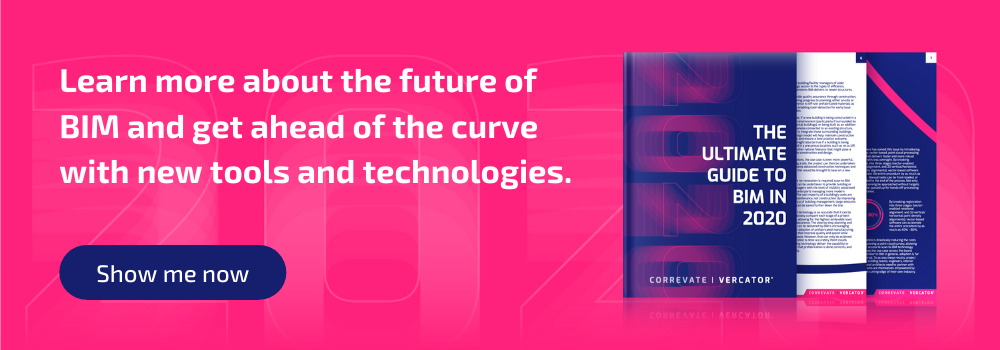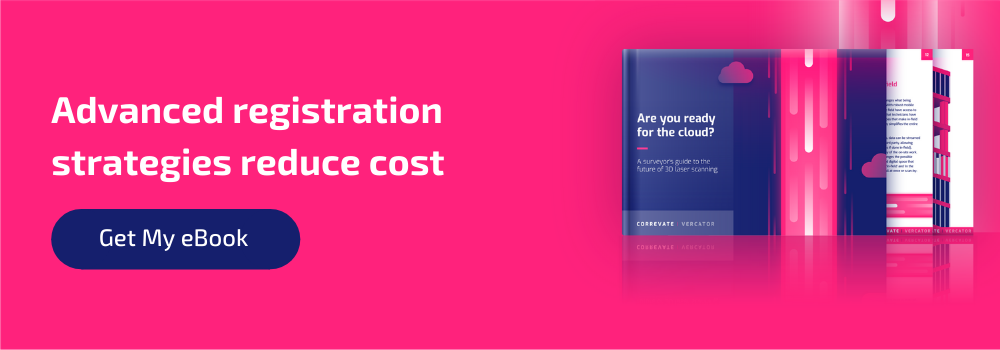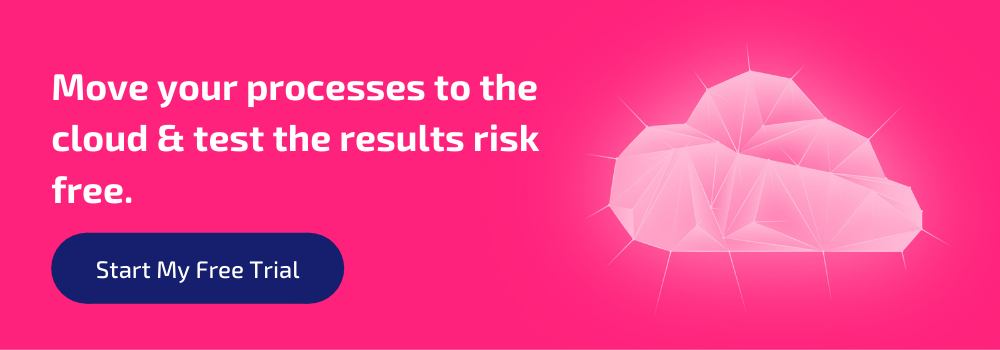4 reasons we built Vercator around the cloud

We developed Vercator to transform point cloud processing. Our ambition has always been to create software that removes the barriers to point cloud adoption.
By representing features from the natural environment as vectors, then treating them as natural targets, we quickly, and reliability align overlapping scans. Vectors reduce the number of misalignments resulting in a more reliable and robust method.
But what was the best way to deliver this new vector-based processing? The accessibility and scalability of the cloud was fundamental to us realising that hands-off processing opened the door to faster, parallelised 3D registration and modelling.
But there is more to the cloud than processing power. Digital ecosystems are the future of our next industrial revolution, and the cloud makes this happen.
Why Vercator works in the cloud
We can already see how initiatives such as Building Information Modelling (BIM) and the creation of digital twins are transforming industries.
The ability to:
- store information centrally
- to hand it off to other processes and stakeholders
- to have global 24x7 access
- to have a "one source of truth" design
are all delivered by the cloud. Vercator is what is known as "cloud native" — designed for the cloud.
Software-enabled services
Our software-enabled service model allows users to benefit immediately from any improvements in Vercator software. It also makes it easy to develop more exciting payment and usage models — such as using the same tokens to pay for any of the services we provide.
If you'd like more detail, you can learn more about our approach, and the cloud in general, from our ebook — Are You Ready For the Cloud?
1. Greatly accelerated processing
Producing accurate and complete 3D point clouds requires multiple scans. The result is dozens, if not hundreds or thousands of independent scans.
To produce an accurate point cloud that covers the entire area, you stitch together individual scans. To do this, legacy point cloud processing software used to follow serial steps, with human intervention at every stage. Not only is this slow, it takes up a lot of personnel time, driving up costs.
Our multi-stage process front-loads manual inputs, allowing for hand-off processing. On its own, this accelerates processing and reduces the total number of personnel-hours required. In partnership with the cloud, things get even faster.
Without needing to manually cross-check during processing, the more processing power at your disposal, the faster you get to results. This scenario is perfect for the cloud. The results can be startling.
For example, let's take a large building, such as an office block made up of over 170 laser scans. Vercator software can automatically register the datasets in 3 hours on the cloud. A significant reduction in processing time and all without operator intervention.
Taking advantage of these processing time savings to accelerate the whole process is where the cloud comes into its own.
2. Flexible access and collaboration
They say time is money, and it’s vital to continually look to accelerate end-to-end processes from scanner to outcome — whether the result is a report to a client, a rendering of an image, or a model of a building or structure.
There is a realisation that data, through design, construction and ongoing operation, is now as important as the asset itself. Capturing that data early, refreshing it and sharing it with other stakeholders is now the role of cloud-based registration.
Processing and storing information for all parties is the role of the cloud. Getting access for the right people and skills, at the right time, is key to success.
Wide-ranging file sharing
In the design phase and the implementation phase, you can massively increase the efficiency of your information communication by sharing files rather than sending them.
Anytime-anywhere access
Cloud storage makes cross-company and cross-regional collaboration possible. By saving and accessing files in a cloud storage system, you automatically control which contributors can access, modify, and change content. You start to manage your information flows.
Keeping detailed records
Archiving and file sharing are perfect storage applications for the cloud. They don't need any huge investment and connect clients and stakeholders. They provide an audit trail in case of disputes and a back-up in case of problems. But the cloud offers more resilience than just file back-up.
3. Resilient infrastructure
Cloud computing has emerged as one of the few plus points for businesses during the current pandemic. It has been critical for companies to maintain operations and continue to serve their customers.
Typically, clouds have several locations for their data centres, and they mirror your data and applications across at least two of them. That's the least expensive and most effective way of ensuring continuity while enjoying the cloud's economies of scale.
The network then becomes a more critical factor in your resilient architecture. With 5G networks beginning to become more mainstream, remote access and in-field processing are more and more viable.
4. Easy ways to get started
For some time now, cloud software models have offered users easy access to a wide range of on-line applications. Being in the cloud has always meant you could get hands-on experience with new software with the click of a button.
We are taking this traditional software-as-a-service model one step further by reducing administrative hassle and delivering outcomes on demand — embracing a software-enabled-service operation. We've been able to do away with the outdated software licence system. All of our services in the cloud are now chargeable by tokens.
Tokens are purchased in two ways; Pay As You Go or Auto-Replenishment. Token bundle pricing starts from $140; they have no expiry date, and there are no additional data storage charges.
You can also take advantage of our free trial to register a maximum of 100 scans, which gives you 30 days to test the service.
The future of point clouds
To realise the potential of 3D point clouds, we had to provide high-speed, robust, automatic alignment of potentially thousands of scans. That needed sophisticated vector-based processing software coupled with the power of the cloud.
Our cloud implementation now enables you to capture data onsite, speed alignment, and simplify downstream analysis. With emerging techniques for recognising and 'extracting' complex objects, we see cloud becoming even more crucial.
Point cloud registration works in the cloud, and we believe the cloud will be a central platform for surveying from now on. The adoption of cloud helps future-proof your business from the profound changes that are happening across the globe. Fundamentally, that’s why we build Vercator in the cloud. Try it out for free today.
Tags: Vercator



